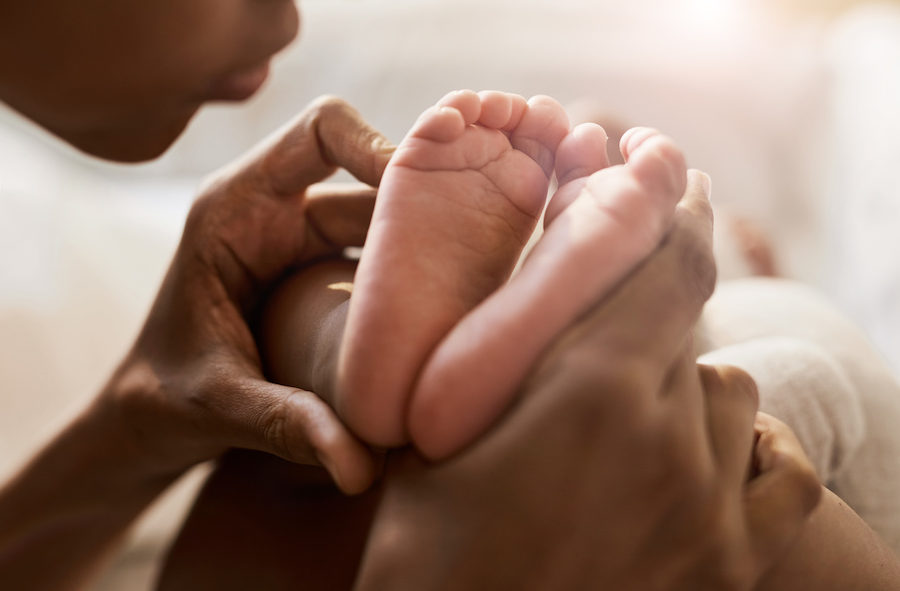The FDA issued a warning to women who are pregnant and breastfeeding about the use of any cannabinoid containing product. It states that CBD has not been sufficiently researched and women who are expecting or breastfeeding cannot take that risk with their children. Many women have turned to cannabis to manage the side effects of pregnancy such as anxiety, pain, and sleeplessness. Keep in mind that the following discussion does not apply to and include hemp-seed derived foods and ingredients, they do not contain the cannabinoids whose effects are in question.
The FDA, Food and Drug Administration, is an authority that is against the use of any cannabis product until there is adequate research. Whether it is something you eat, smoke or apply on your skin, the FDA does not approve. A study that was conducted on pregnant animals discovered that the pregnant animals who consumed cannabinoid containing products displayed problematic results. These problems mainly included issues with the reproductive system of developing male fetuses. The FDA also expects that there will always be an amount of CBD that gets transferred to the baby through breast milk despite preventative consumption methods. Cannabis is on the American Academy of Pediatrics Committee on Drugs (2001) list of ‘Drugs of Abuse for Which Adverse Effects on the Infant during Breastfeeding’ which is supported by reports of those adverse effects.
The FDA also advises against cannabis use while pregnant and breastfeeding because of the potential contamination of cannabis by pesticides, heavy metals, bacteria, and fungus. Since their research is still underway, they have taken the following stance. There are too many questions that remain unanswered about the science, safety, and quality of cannabis products and how consumption would affect the individual and their baby. Thus, it would not be good to put yourself and your baby at risk while pregnant or breastfeeding. At least, don’t risk anything until further research has been conducted and effects have been confirmed.
How long will it stay in the system?
The body metabolizes cannabis and its’ cannabinoids very slowly and stores it within the fat cells of the body. This means that the constituents in cannabis will remain in the body for days and even weeks after consumption. When you are nursing, this is a very important fact to consider because any nutrients and medications that the mother consumes can automatically be transferred to the nursing infant.
How cannabinoids get in breastmilk:
Breastmilk is made by utilizing the fat and nutrients in the mother’s body. Since cannabinoids are stored in the fat, it is highly likely that cannabis will be transferred to breastmilk as well.
What are the potential risks?
Developmental problems: Early cannabis exposure could have a negative impact on infants’ mental and physical development.
Reduced awareness: Cannabis can reduce awareness in parents which can then compromise their ability to care for the infant.
Schizophrenia: It has been suggested that there is a potential link between early exposure to cannabis and schizophrenia.
Positive drug tests: When a mother consumes cannabis and nurses her infant, there will be traceable amounts of THC in the baby’s system. The infant could test positive in an illicit drug urine screening. This could then lead to this next potential risk…
Legal Consequences: Until cannabis is federally legal, parents who consume cannabis products do put their families in jeopardy. Child Protective Services could still intervene even if the parent is a medical patient.
Harm reduction and suggested preventatives
For those that insist on utilizing the medicinal benefits of cannabis while breastfeeding, practice common sense and due diligence. Apply the same measures as with drinking alcohol and nursing to further avoid any negative impacts. Excercise the ‘pump and dump’ method or hand express if there is an immediate risk for large amounts of THC in the mother’s milk. But do be aware that when using cannabis, there will always be a risk of it getting to the infant no matter the amount as it stays in the system for a long period of time.
The lack of research makes it very difficult for professionals to make any recommendations about cannabis and breastfeeding. However, the general consensus remains that parents should err on the side of caution. Though there is not enough research, the research that is already out there has not followed the infant after the study to see if there are any long-term effects on their development. For now, parents who breastfeed should keep their eyes peeled as more research comes about and practice the utmost caution when it comes to cannabis.
Author, Share & Comments
















